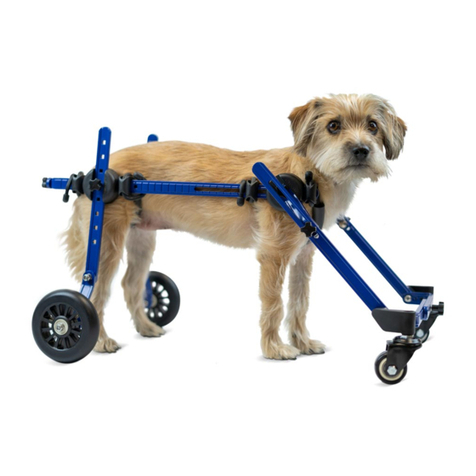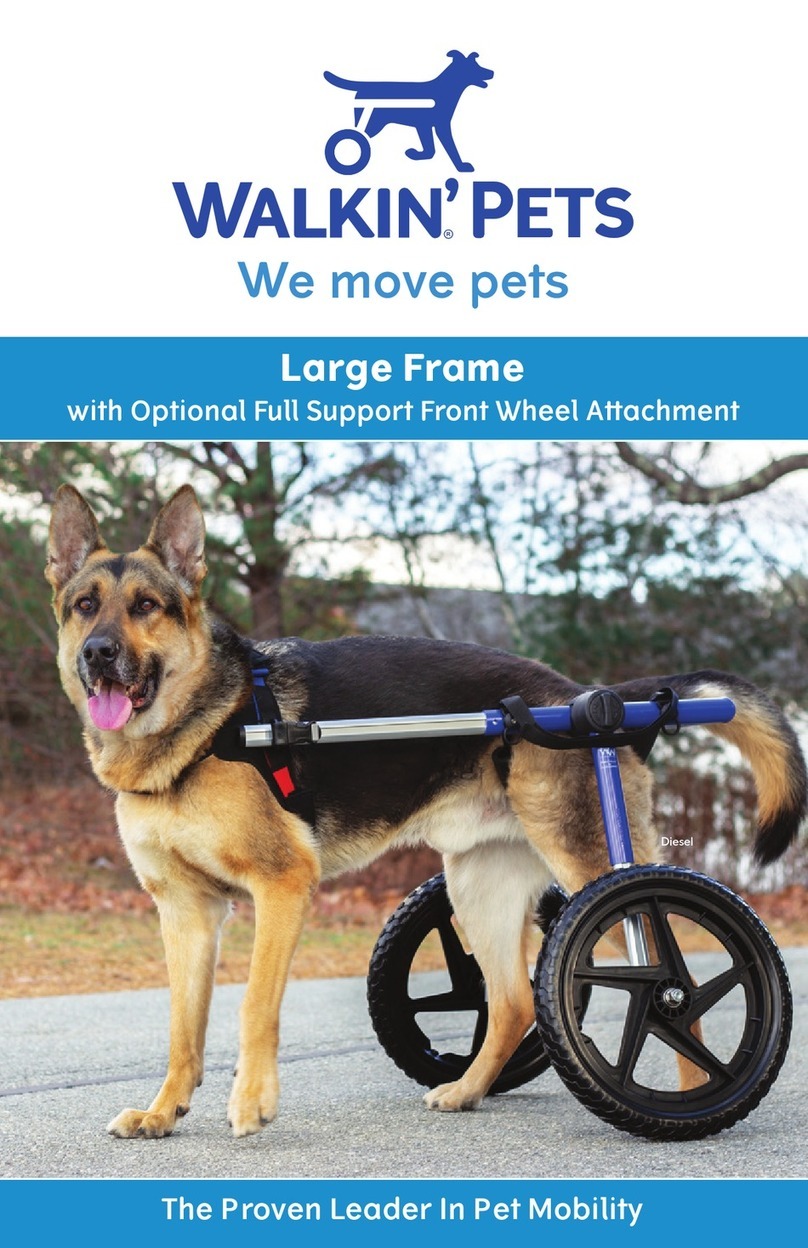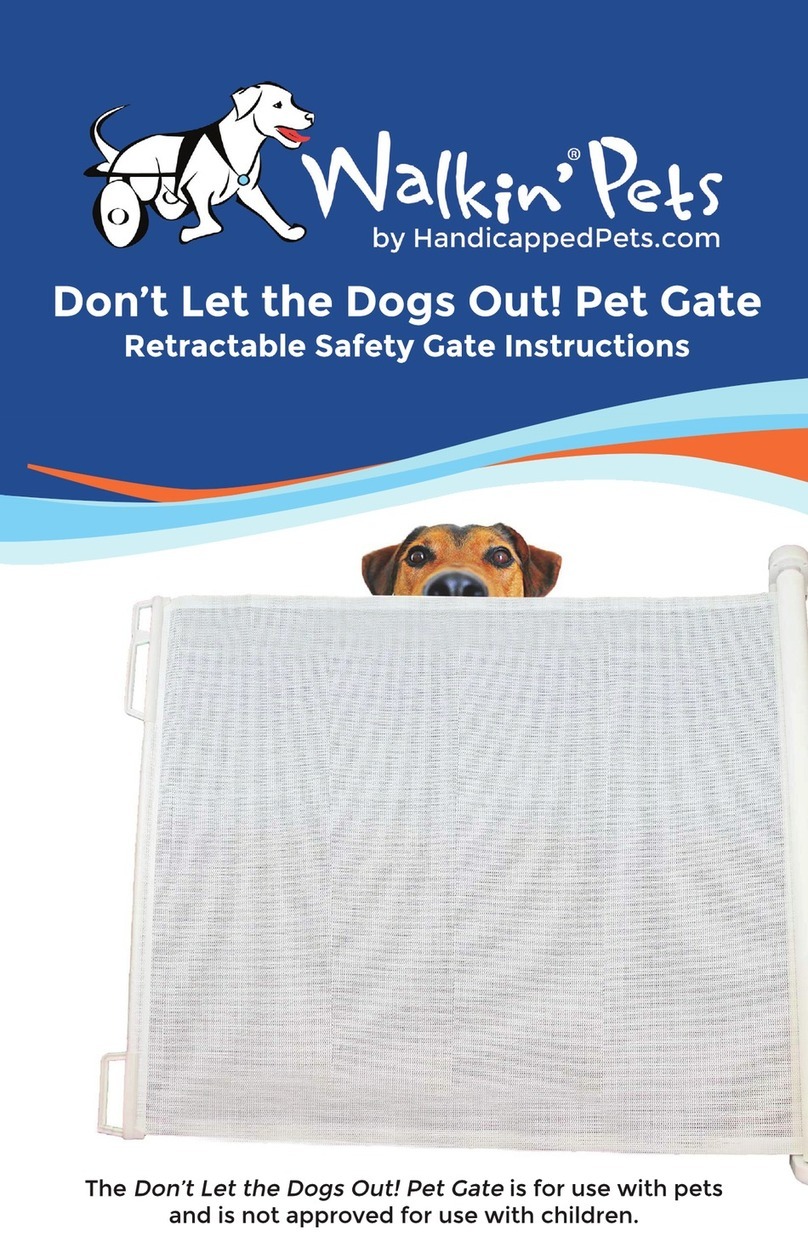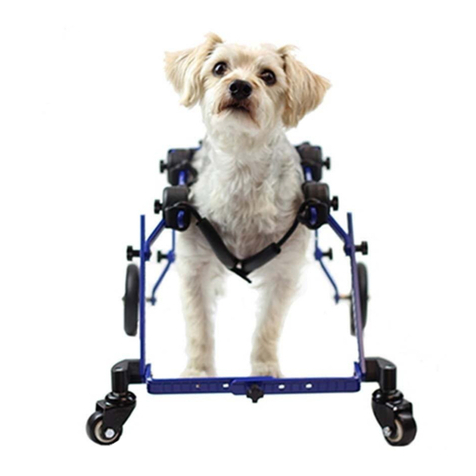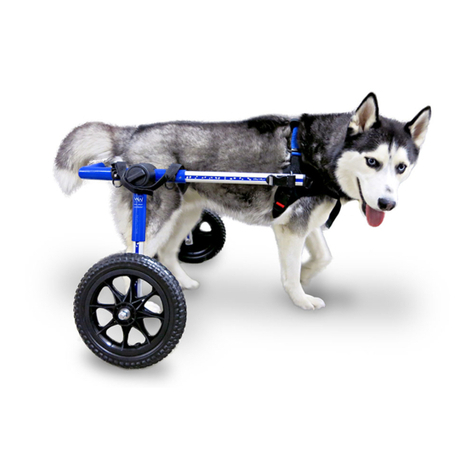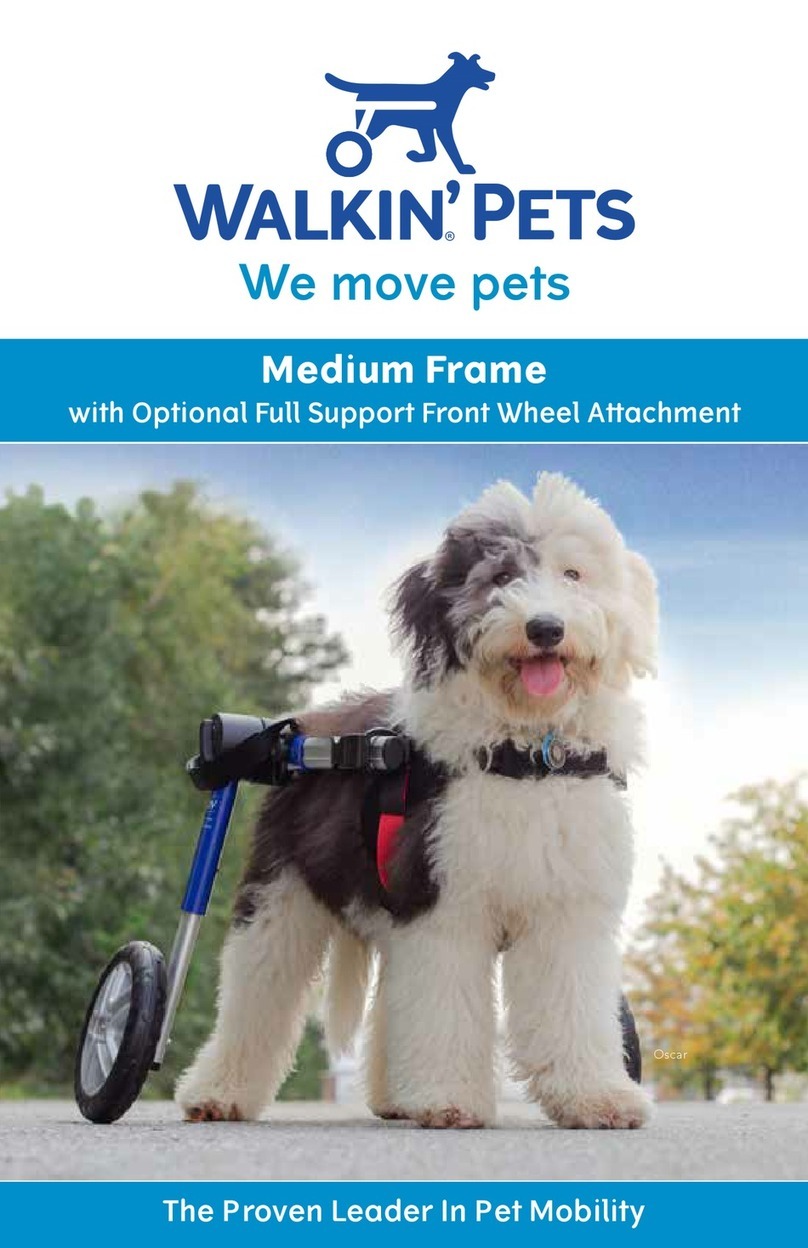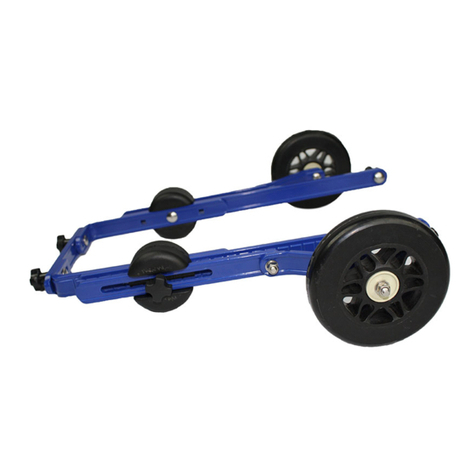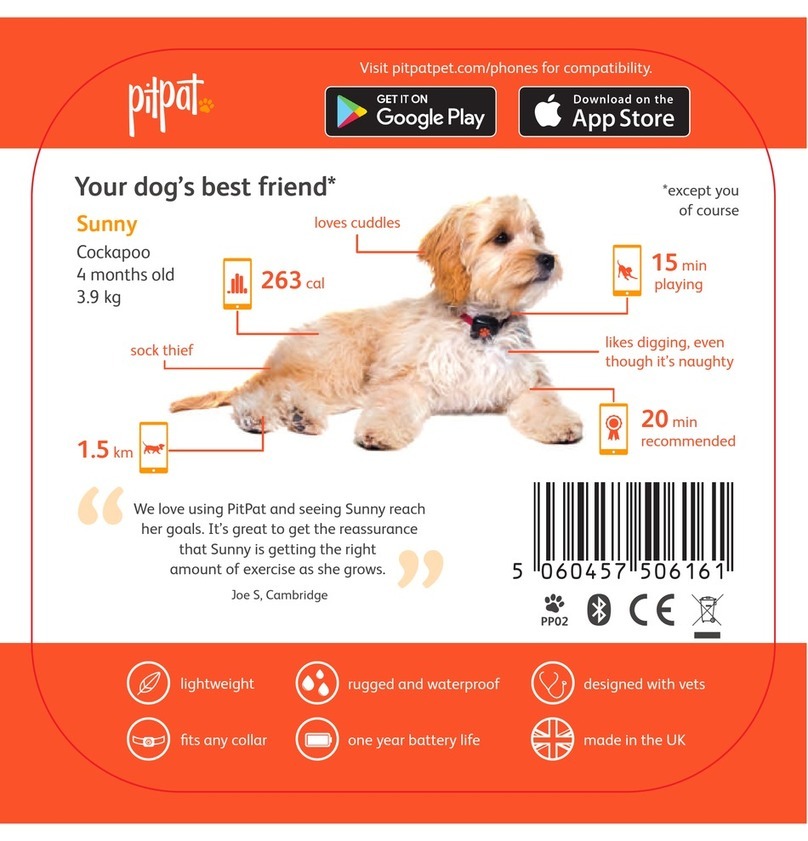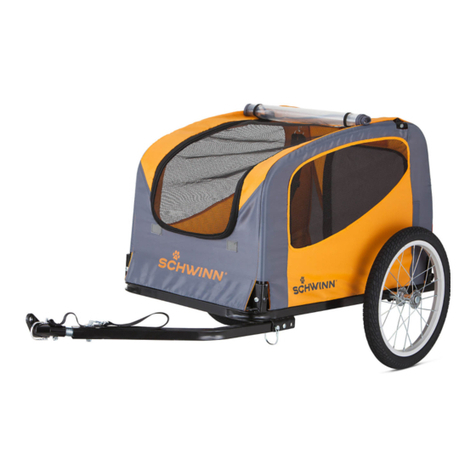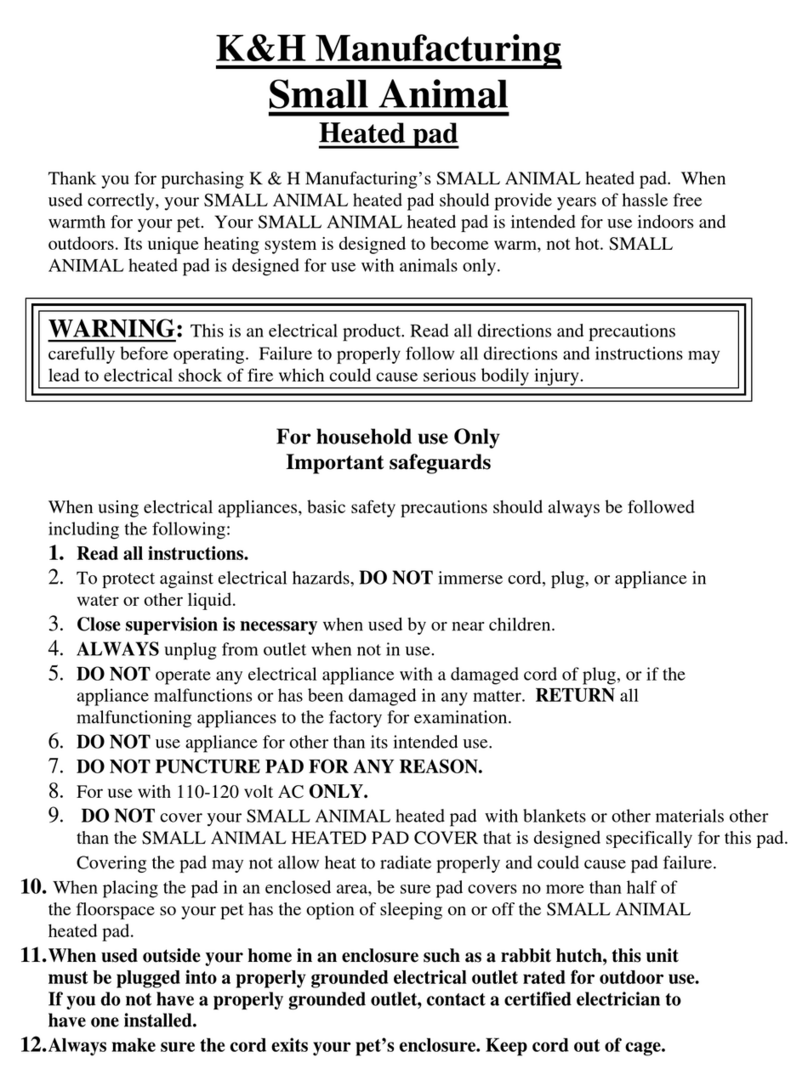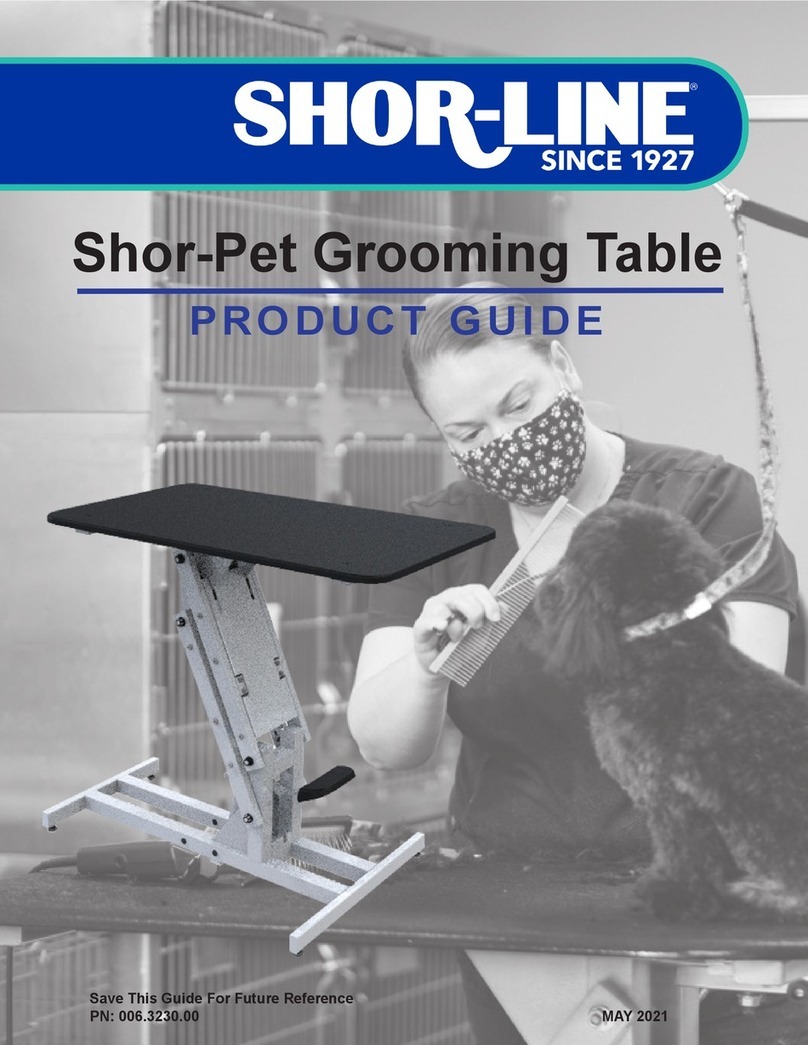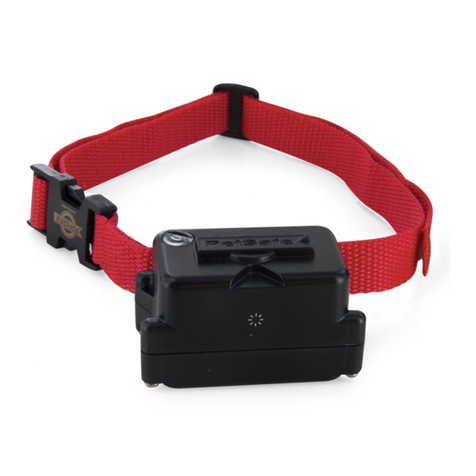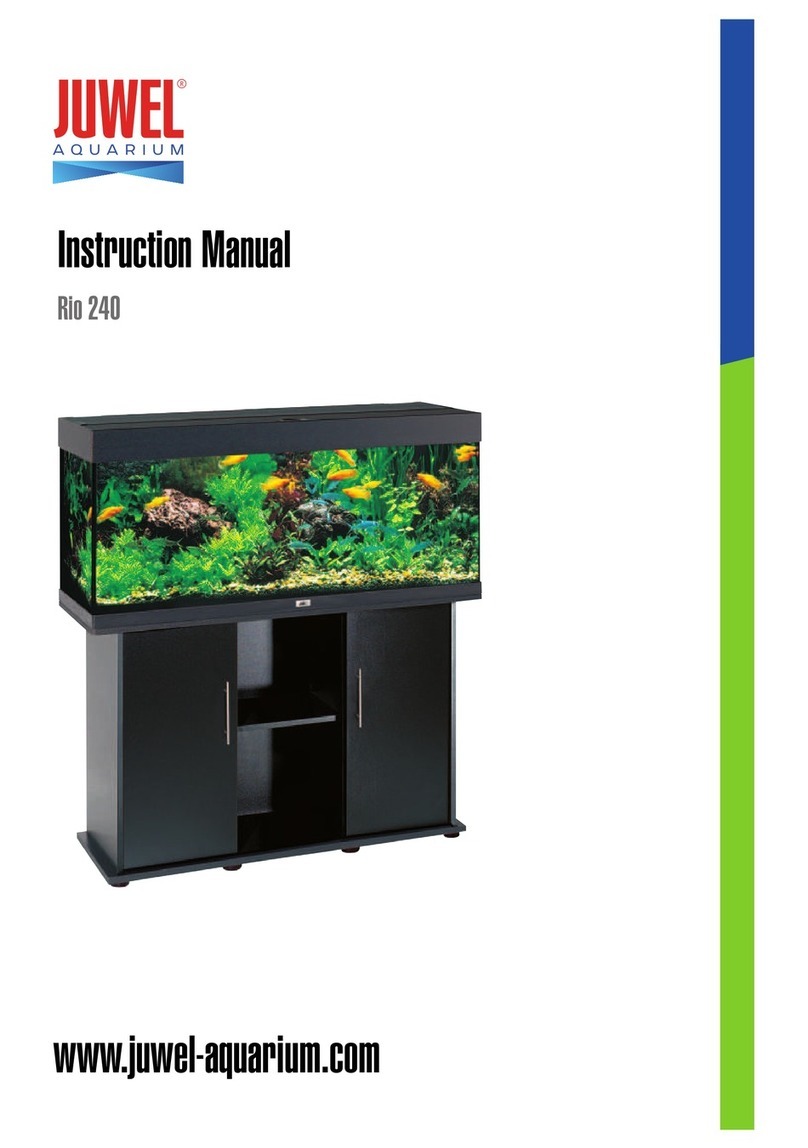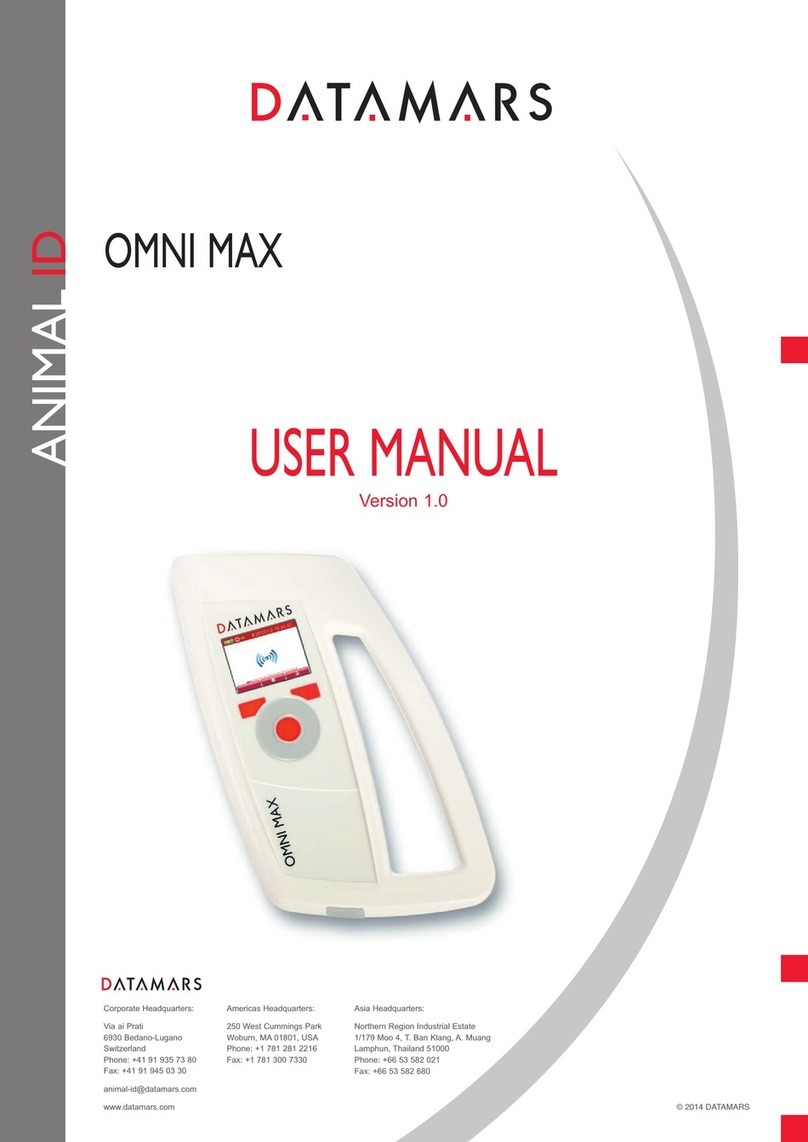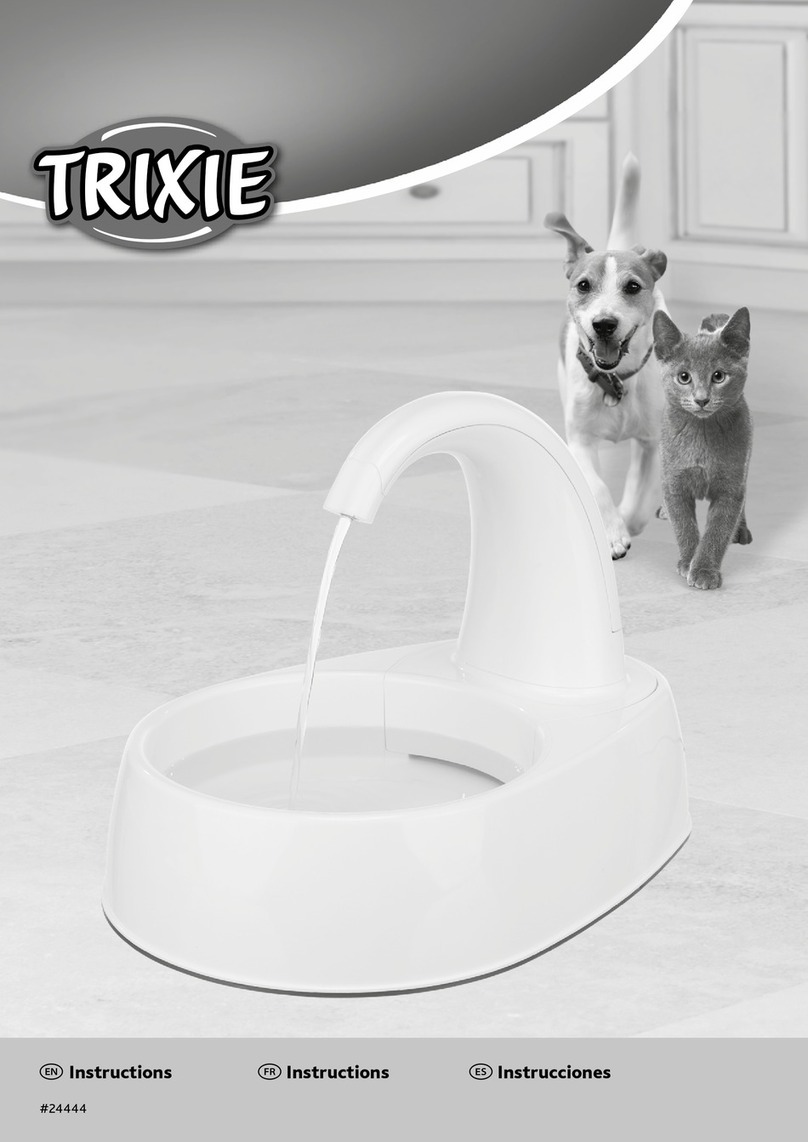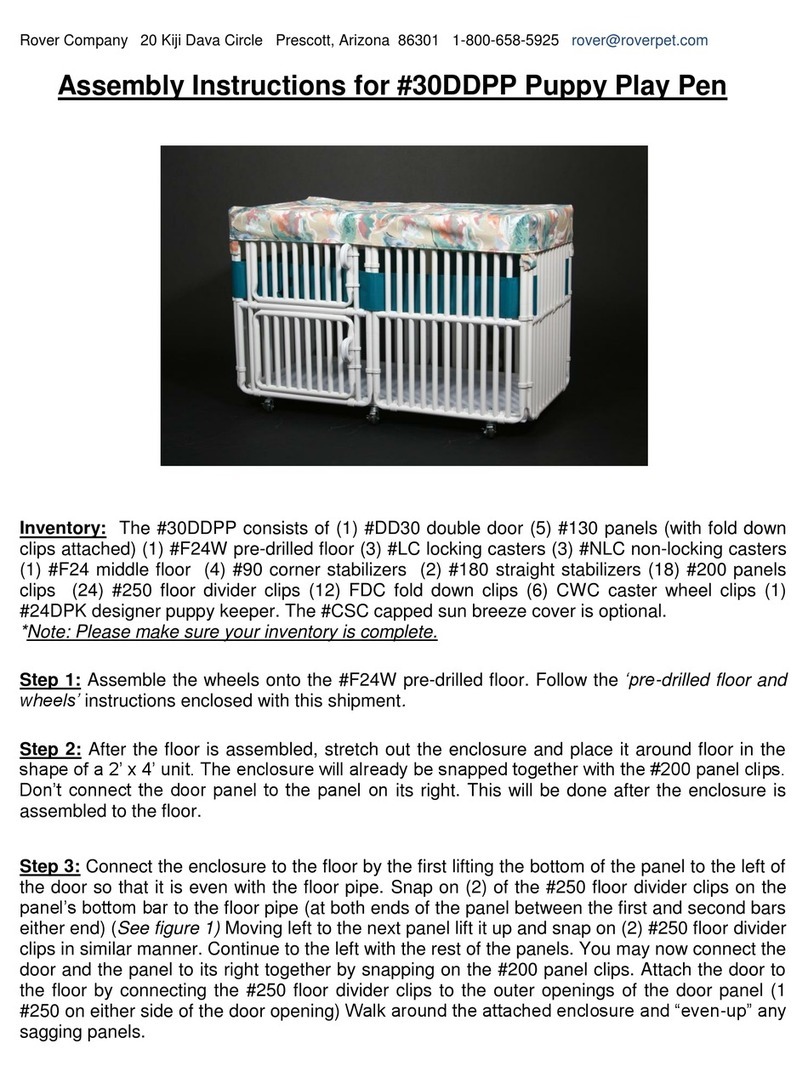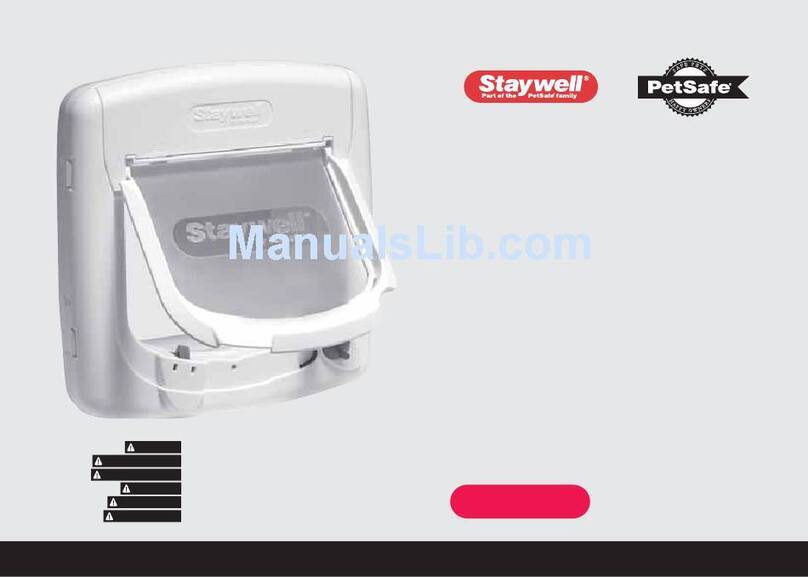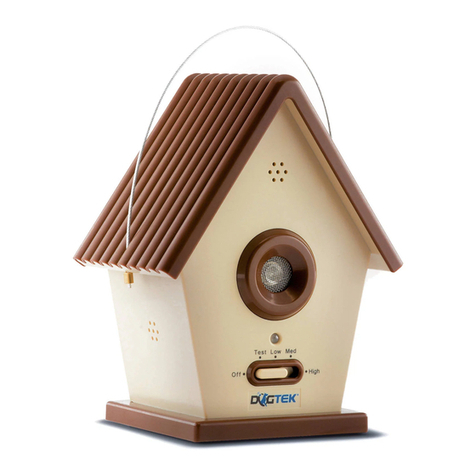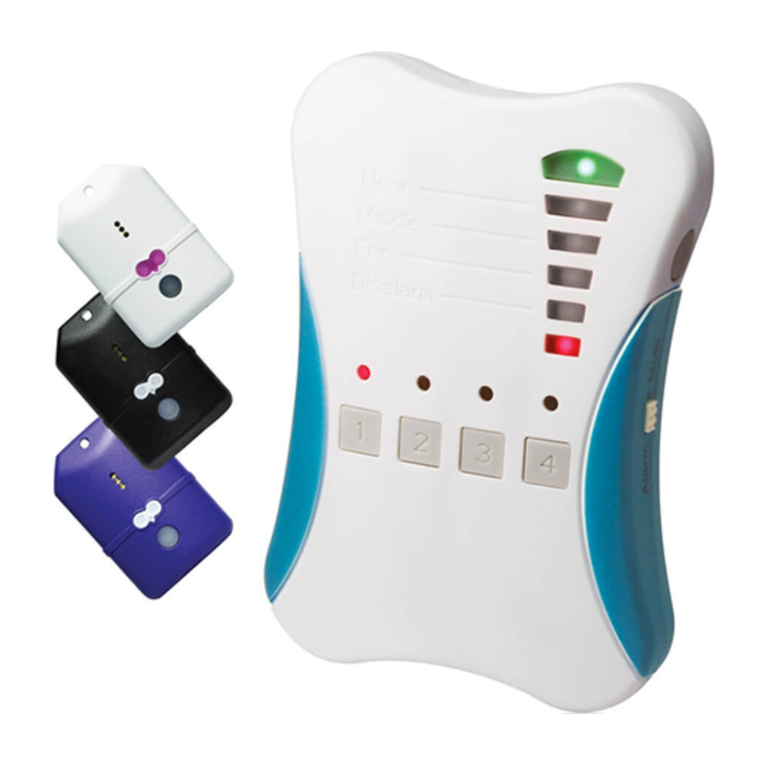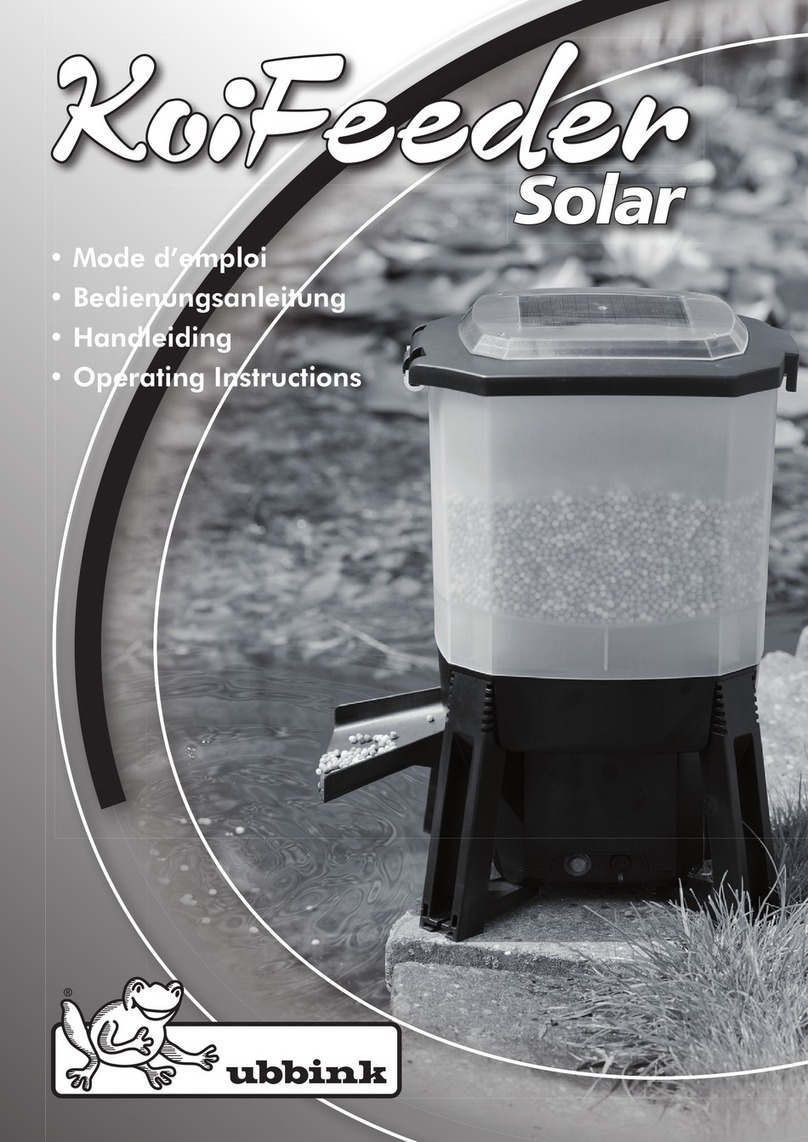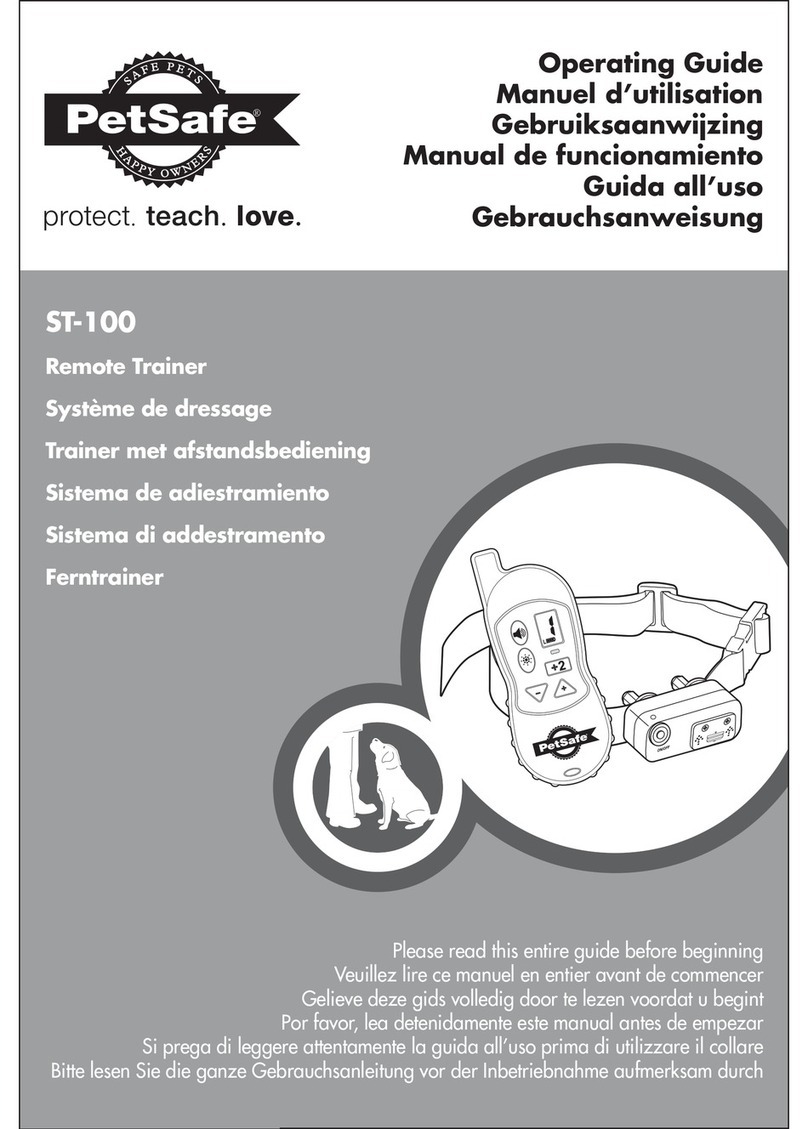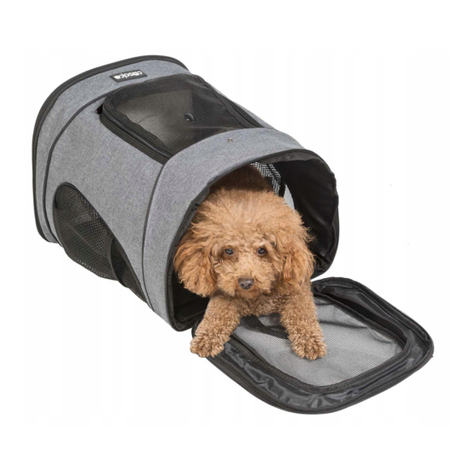
6www.WalkinPets.com
1. When starting this process we suggest that you use the dog’s
favorite treats to reward your dog for walking forward. You
won’t need to keep using these treats every day, just in the
beginning of the training process. A hungry dog is a motivated
dog! Work with your dog before you have fed him/her a meal.
S/he will be more eager to pay attention and earn the food
reward if s/he is hungry.
2. Do not immediately put your dog in the wheelchair. Assemble
the wheelchair and leave it in an area where your dog can see,
smell, and touch it.
3. Once the dog is comfortable near the wheelchair, put the front
harness on and leave him/her alone for a while. Let the dog
get used to the feeling of the straps.
4. When your dog is comfortable, try putting him/her in the
leg ring support system and attach the front harness to the
wheelchair. Give him/her a treat for positive association.
5. Aer your dog is in the wheelchair, hold the food reward right
at his/her nose level. Feed several pieces. Then you can step
one foot backwards, again holding the food reward in front of
you. S/he should then walk toward you to get the treat. Before
you know it, s/he is walking in his Walkin’ Wheels®! Again, give
a treat and positive praise.
6. Work in very short (5-10) minute sessions, several times a day.
Give your dog rest periods between each session.
Note: Keep in control of the dog’s movement at first. Keep the dog in
a clear area and on a short leash. If the dog does become frightened,
then disconnect the harness from the wheelchair and try again later.
Until your dog gets used to the Walkin’ Wheels®, limit the amount
of time spent in it. The Walkin’ Wheels®is designed to allow your
dog to get exercise and physical therapy. Dogs cannot lie down in
the wheelchair, but will be able to urinate and defecate while in the
wheelchair. Start with short periods and increase slowly. Make sure
you don’t overdo it the first day.
